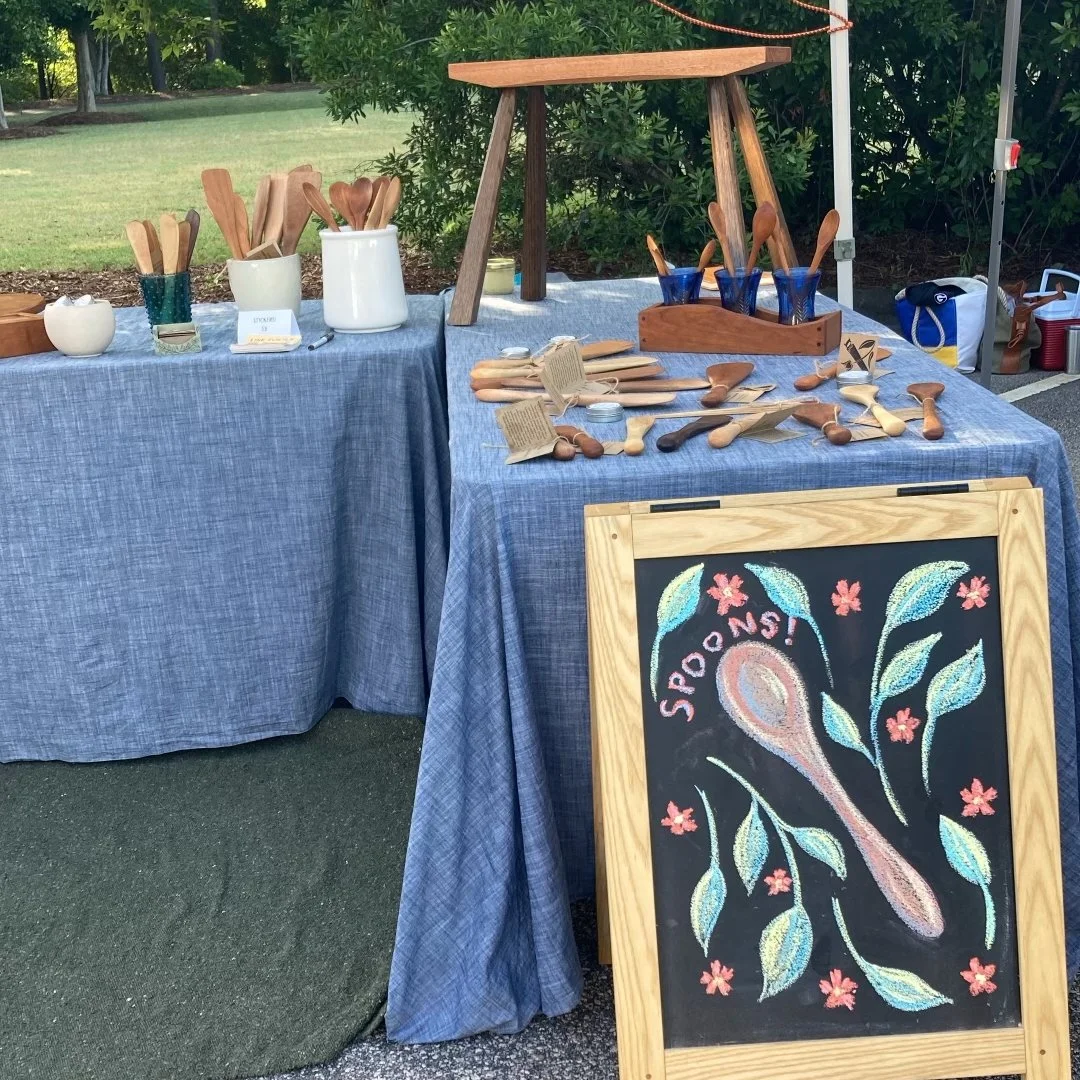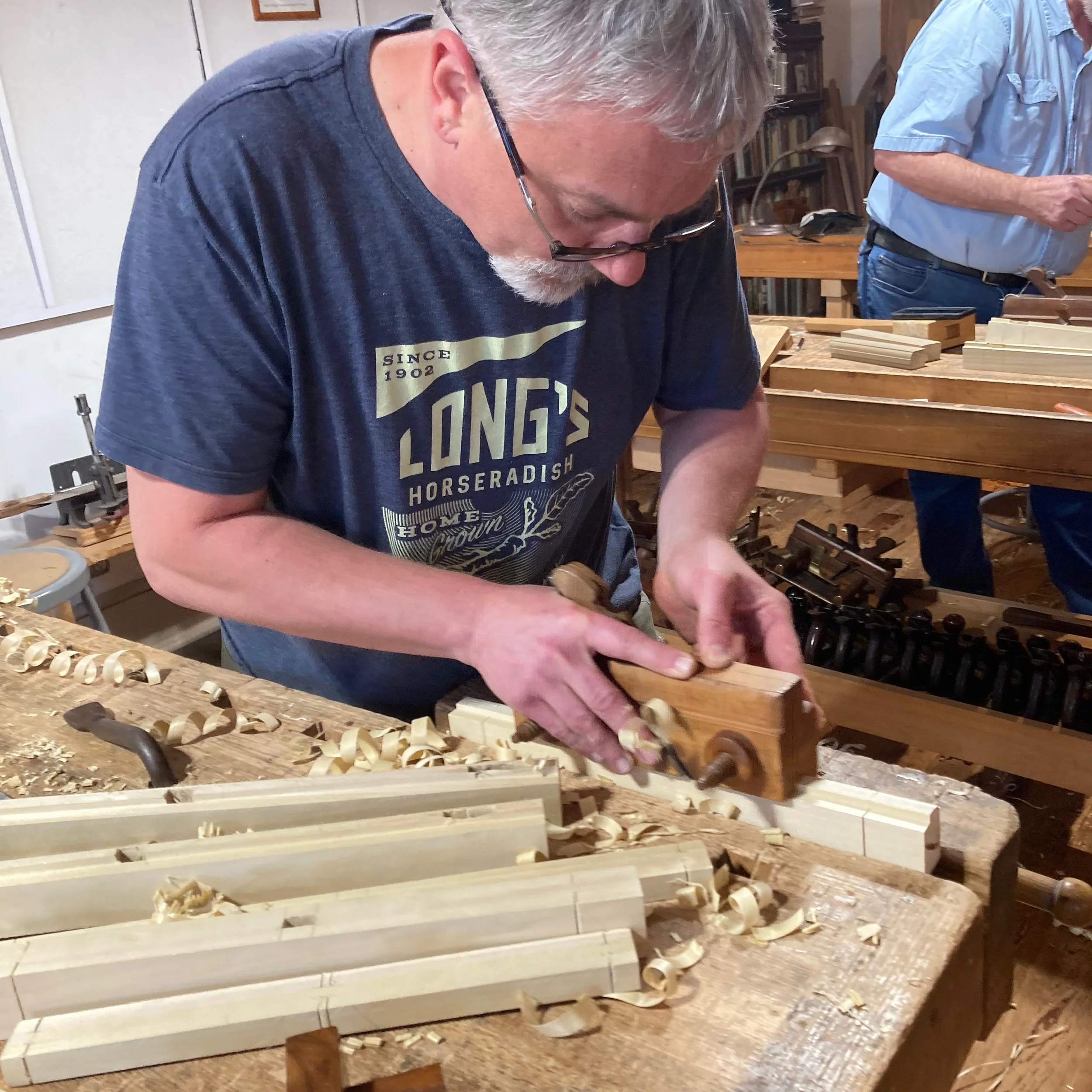About my work
I am a woodworker specializing in functional and decorative carving, from woodenware and faceted furniture to display boxes and fine art. My workshop and studio are at my home in Raleigh, North Carolina.
Whether for art or for furniture, I work almost exclusively with hand tools and rely on native woods and natural finishes. My furniture and woodenware are made to be used, to be comfortable, and to last. But I aim for flowing lines in something as simple as a spatula, and even a footstool is a kind of sculpture! Much of my work these days is chip carving, relief carving done with a knife. It's a form traditionally limited to regulated geometric designs, but I'm interested in testing the limits of what that simple knife can do, incorporating motifs from folk art and the life of the North Carolina Piedmont.





Writing and teaching
I have written a fair bit over the years about woodworking and craft, which you can read on my personal website.
I have also taught a class at the John C. Campbell Folk School in Brasstown, North Carolina, on building the thirty-dollar shaving horse (shown here).
I do not currently do any formal teaching, but I’m always happy to talk about the craft and to arrange informal demonstrations.

